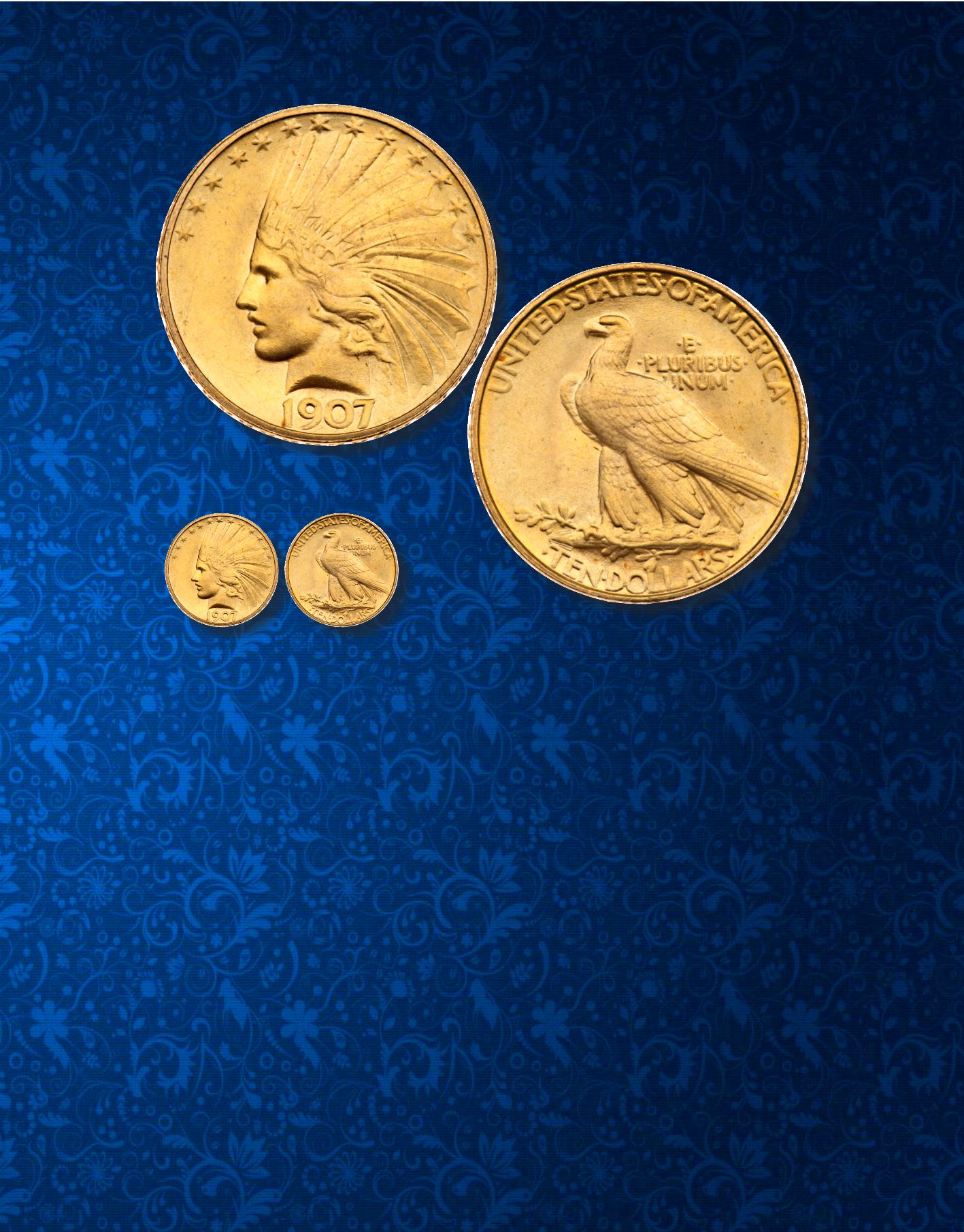

186
1611
1907. Rolled Edge. PCGS graded MS-65+ PQ.
CAC Approved.
This is one of the great rarities of the 20th Century. After the stacking
failure of the 1907 Wire Edge coins this revised design was implemented, employing the same triangular stops before and after the words on
the reverse, with the inclusion of a thick rim at the edge of both dies, allowing for better stacking. However, after a rather large mintage of
between 20,000 and 34,100 pieces, production was halted. Mint Engraver Charles E. Barber did not like this design and pointed to the fact
that certain areas tended to not strike up well, notably the hair over Liberty’s ear and portions of the eagle’s wing and trailing leg and claw.
Mint Director Frank Leach agreed with Supeintendent John H. Landis that these coins did not meet their quality standards and ordered them
melted. Only 42 pieces were released. Charles E. Barber then set to task to stengthen certain areas of the master hubs and place his own
stamp on Saint-Gaudens work. Barber strengthened the feather ends, omitted the triangular dots, moved one of Liberty’s curls to encroach
the IBE of LIBERTY and altered the shape of the branch in the eagle’s claw. Although the result was sharper feather ends, the central fea-
tures continued to show softness on both Liberty and the eagle once the Barber revisions went into production.
For many years these Rolled Edge coins were considered a pattern issue (J-1775), but with the prodigious mintage and intention for circula-
tion, these technically were not patterns at all but simply an intial production run which was found to not meet up to standards. In due
course these coins were not generally released to the public or circulation. Many examples exist of abrupt changes to initial coin designs,
especially when the conceptual designs were created by artists from outside the Mint. Professional jealousies run deep, and most of the
Mint’s employees don’t favor outsiders designing coins. Furthermore, the practical issues of coin design often get in the way of concepts,
such things as how well a coin functions in a vending machine often cause heartaches for designers and modifications to artistic concepts.
Examples include Christian Gobrecht’s initial design of the half dime and dime of 1837 without obverse stars, the Drapery issues of the next
few years, the 1913 Buffalo nickel which was changed midyear to stand on more defined and solid ground, the 1921 Peace dollar in high
relief which was modified. Needless to say the Standing Liberty quarter had more than its share of changes to its 15 years of production.
These changes are often necessary, and are part of the fascination to this hobby.
The Rolled Edge coins are considered close to the original Saint-Gaudens design, with the minor addition of the rim, but their central striking
softness became their undoing and provided an opportunity to make modifications to the details of the concept. These 42 or so coins repre-
sent a high point in our coinage, which of course had to be chisled down to a more workaday style that would endure circulation and would
strike up well enough under the constraints of the coining press. These Rolled Edge coins remain one of the most popular and elegant of the
20th Century and their rarity remains legendary. Possessing one of these places any collection into the catagory of greatness that will long
be remembered.
Pop 1; 17 finer (PCGS # 8851)
Estimated Value.............................................................................................................................................................. $200,000-UP
Ex. US Gold from a prominent midwestern family collection.



















